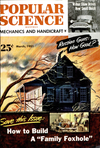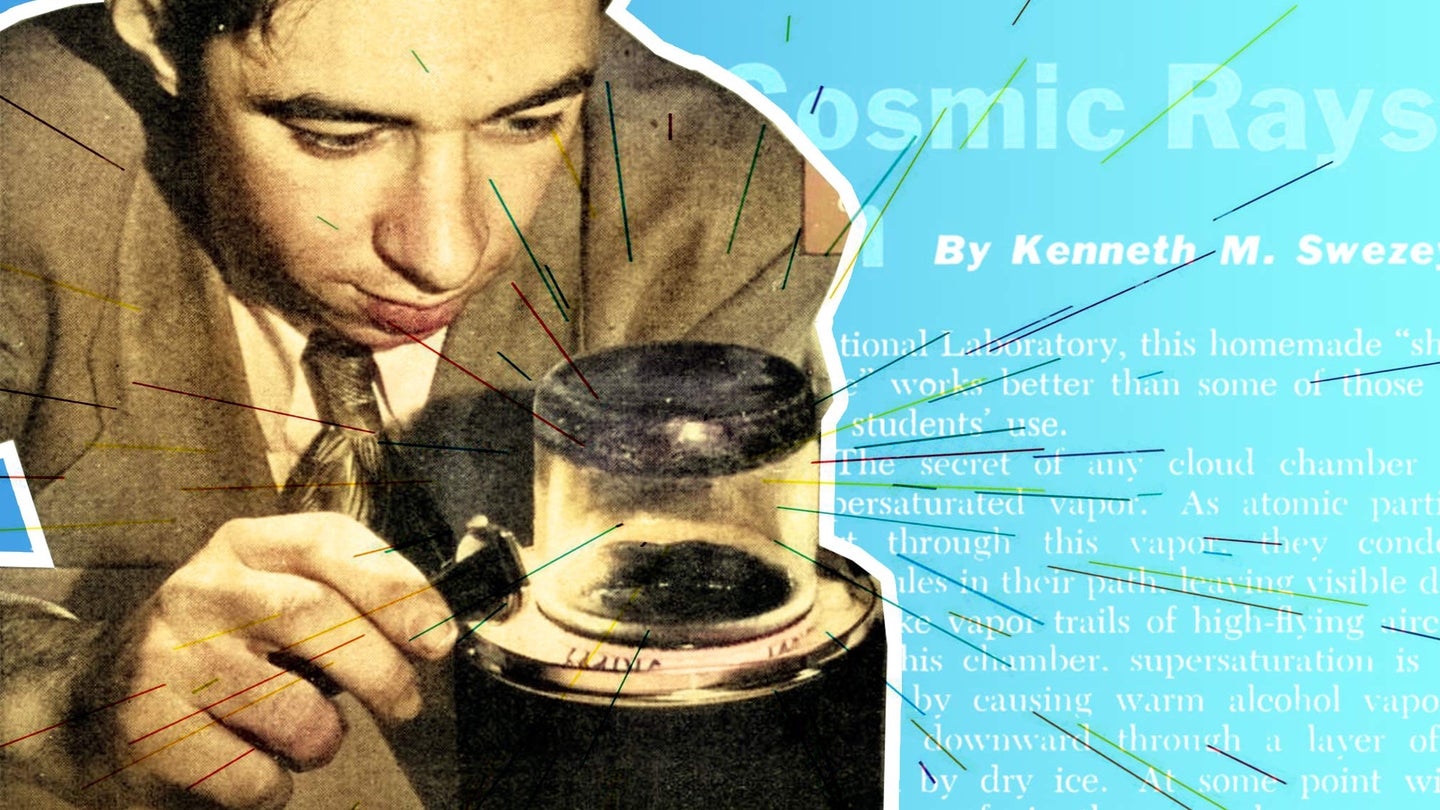ENERGY NEVER STOPS radiating through space, or on Earth. For more than a decade, hundreds of millions of samples from the never-ending deluge of protons, nuclei, and other atomic debris have collected in the International Space Station’s cosmic ray bucket—an instrument called the Alpha Magnetic Spectrometer. Here at home, cloud chambers—like those used by CERN, the Switzerland-based European Organization for Nuclear Research—illuminate the universe’s invisible cosmic storm.
In March 1951, longtime Popular Science contributor Kenneth M. Swezey treated space enthusiasts and DIYers to a step-by-step guide to making a cloud chamber, using a peanut butter jar. “The secret of any cloud chamber is a supersaturated vapor,” Swezey wrote. “As atomic particles dart through this vapor, they condense molecules in their path, leaving visible droplets—like vapor trails of high-flying aircraft.”
The first cloud chamber was devised by physicist Charles Thomas Rees Wilson in 1895 to reproduce the airborne puffs and study their behavior. By 1910, he’d begun spying the trails of charged particles, which ionized the supersaturated air and caused water droplets to form. At about the same time, physicist Victor Hess determined that charged particles, which he dubbed cosmic rays, were entering Earth’s atmosphere from space, a discovery that earned him a Nobel Prize in 1936.
Despite their ubiquity, the origins of those celestial sparks remain a mystery, although supernovas and ordinary stars like our sun are suspected to be prime sources. Beams of energy collide with atoms in Earth’s upper atmosphere, spawning charged subatomic particles like pions, muons, electrons, and positrons, whose ionized trails show up as spindly lines in cloud chambers. Radiation here on Earth also generates cosmic rays.
When Swezey offered up his home chamber in the 1950s, its use seemed somewhat practical. Fears of nuclear war, spurred by the worsening Cold War, dominated headlines. A homemade cloud chamber can detect atomic particles from nearby explosions, not to mention alpha particles, a product of radioactive decay from sources like radon gas, and gamma rays from radium, which was still being painted onto watch dials until the 1970s.

To view the cosmic ray storm, start with a glass or plastic jar—the bigger the better. A dark background, such as black felt glued inside the base and lid, will enhance the experience. Saturate the material at the base with rubbing alcohol, close the lid, and place the jar upside down on a bed of dry ice. As the apparatus cools, vapor forms. Turn off the lights, then shine a flashlight through the jar. Thin lines should appear, some perfectly straight (high-energy muons, big enough to plow through the jar), others zigzagging (electrons and positrons, so small they pinball off surrounding particles), and still others like eraser smudges (radon-spawned alpha particles, heavy and highly charged so they gather an ionic entourage).
Our 1951 cloud chamber recipe will still work today, although CERN offers an updated instructional video that uses the same essential ingredients. Can’t find dry ice? Ready-made cloud chambers will work at regular freezer temperatures. All you need is nearly pure ethanol and hot water to generate the cloud (and a few hundred extra dollars to cover the equipment costs).
This story originally appeared in the High Issue of Popular Science. Read more PopSci+ stories.


